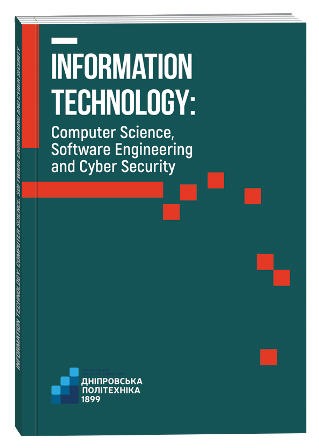THE USE OF MACHINE LEARNING AND DATA ANALYSIS FOR PREDICTING TRENDS IN E-COMMERCE
DOI:
https://doi.org/10.32782/IT/2024-1-10Keywords:
E-commerce, machine learning, forecasting, regresearch analysis.Abstract
This article explores the application of machine learning and data analysis as key tools for predicting trends in e-commerce. It highlights the potential of these technologies in addressing predicting tasks based on large datasets and their effectiveness in uncovering complex relationships and developing predictive models. Aim of the study. The article aims to investigate the capabilities of these technologies in detecting intricate connections and analyzing data to predict future trends. This assists organizations and industries, including e-commerce, in more effectively planning their activities and addressing diverse challenges. The methodology employed in this article focuses on analyzing the correlation between link conversions in website publications and the number of orders. The approach involves using regression analysis in the R-Studio software environment. Before conducting the analysis, the data undergoes checks for heteroskedasticity, autocorrelation, and normality of residual distribution. Methods such as the Glejser method for detecting heteroskedasticity and the Durbin-Watson approach for autocorrelation assessment are utilized. Following confirmation of data adequacy based on the aforementioned criteria, linear regression is applied to establish the relationship between the number of purchases and website visits. The analysis results demonstrate a high level of dependence between these indicators, with a website conversion rate of 20%. The scientific novelty lies in the justification of theoretical and methodological approaches aimed at improving optimization procedures and reducing the use of marketing resources by Ukrainian businesses to increase online sales, as well as in assessing the financial effect of implementing the proposed modeling in practice. Conclusions. The results of the study demonstrated that the development of a significant amount of digital data in combination with the technology of its processing and storage, as well as the availability of mathematical tools for evaluating this data leads to an increase in the efficiency of business activities. Data processing and analysis methods include artificial neural networks, machine learning, spatial analysis, cluster analysis, regression analysis, classification, and data mining.
References
Mitchell T. M. Machine Learning McGraw-Hill International. – 1997. ISBN: 0070428077.
Hastie T., Tibshirani R., Friedman J. The elements of statistical learning: data mining, inference, and prediction. – New York : springer, 2009. Т. 2. С. 1–758. ISBN: 978-0387848570.
Goodfellow I., Bengio Y., Courville A. Deep learning. – MIT press, 2016. ISBN: 978-0262035613.
Bishop C. M. Pattern recognition and machine learning //Springer google schola. 2006. Т. 2. С. 645–678. ISBN: 978-0387310732.
Zhao K., Wang C. Sales forecast in e-commerce using convolutional neural network //arXiv preprint arXiv:1708.07946. 2017. Access mode: https://doi.org/10.48550/arXiv.1708.07946.
Bandara K., Shi P., Bergmeir C., Hewamalage H., Tran Q., Seaman B. Sales demand forecast in e-commerce using a long short-term memory neural network methodology //Neural Information Processing: 26th International Conference, ICONIP 2019, Sydney, NSW, Australia, December 12–15, 2019, Proceedings, Part III 26. – Springer International Publishing, 2019. С. 462–474. Access mode: https://doi.org/10.48550/
arXiv.1901.04028.
Li M., Ji S., Liu G. Forecasting of Chinese E-commerce sales: an empirical comparison of ARIMA, nonlinear autoregressive neural network, and a combined ARIMA-NARNN model //Mathematical Problems in Engineering. 2018. Т. 2018. С. 1–12. Access mode: https://doi.org/10.1155/2018/6924960.
Pavlyshenko B. M. Machine-learning models for sales time series forecasting // Data. 2019. Т. 4. №. 1. С. 15. Access mode: https://doi.org/1010.3390/data4010015.
Elias N., Singh S. Forecasting of Walmart sales using machine learning algorithms //Research paper, Dept. of Electronics & Comm. Engineering, BMS Inst. of Technology & Management, Bangalore, India. – 2018. Access mode: https://medium.com/@auggieheschmeyer/forecasting-walmart-sales-using-machinelearningmodels-3bf38f6c533
VanderPlas J. Python data science handbook: Essential tools for working with data. – « O'Reilly Media, Inc.», 2016. ISBN: 978-1491912058.
Жук О. Ю., Гольченко О. О. Методи прогнозування та аналізу даних. Київ: Видавничий Дім «Слово/Книга». 2018.
Колесников С. А., Чередніченко В. В., Яковлєва І. І. Прогнозування та аналіз даних. Київ: Видавничий центр КНЕУ. 2018.
Колесников С. А., Яковлєва І. І. Машинне навчання та аналіз даних. Київ: Видавничий центр КНЕУ. 2021.
Мартиненко В. Г., Кадук О. В. Прогнозування та технічний аналіз на фінансових ринках. Київ: Видавничий центр КНЕУ. 2019.
Черняк О. І., Комашко О. В., Ставицький А. В., Баженова О. В. Економетрика: підручник. Київ: Видавничо-поліграфічний центр «Київський національний університет імені Тараса Шевченка». 2009.







